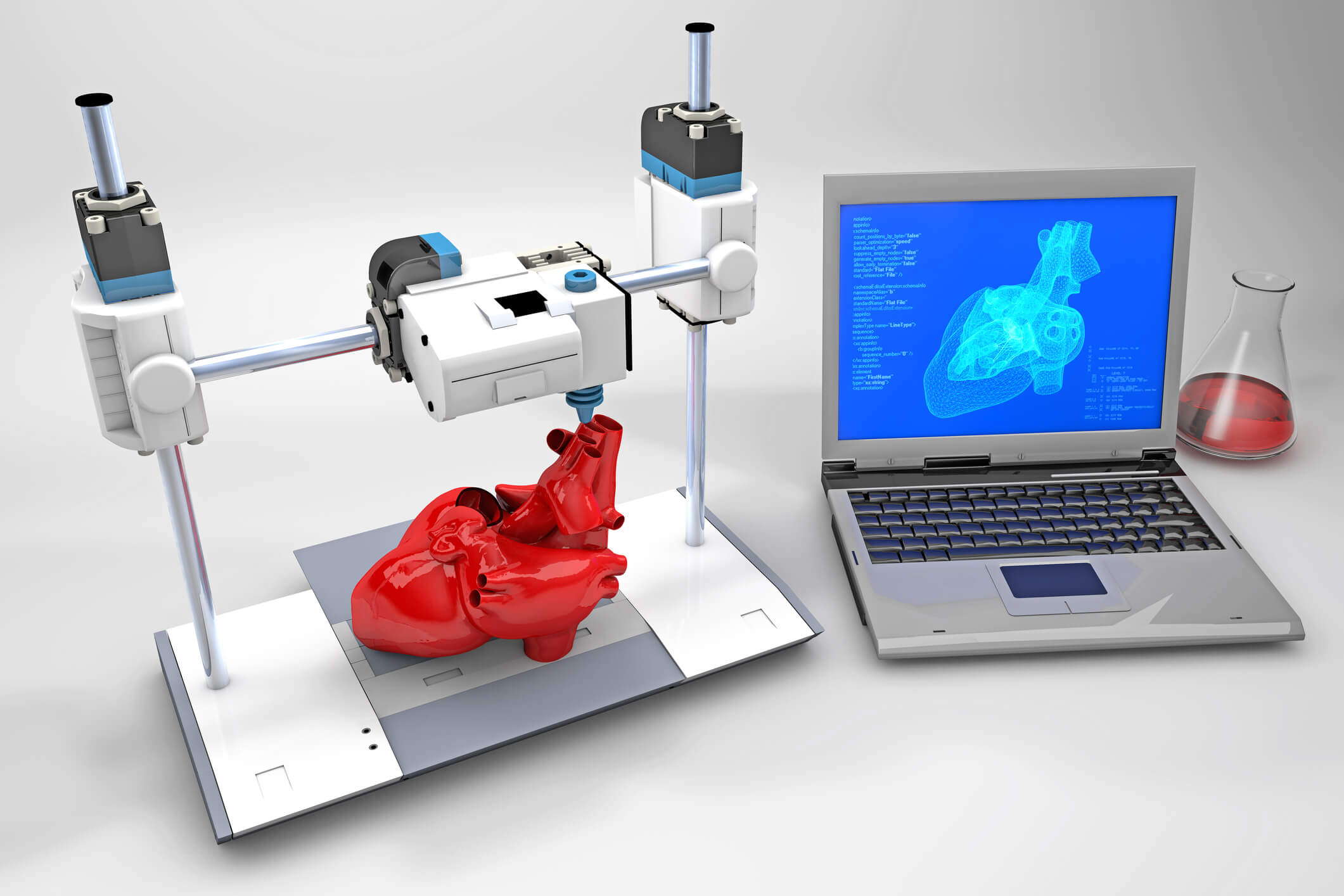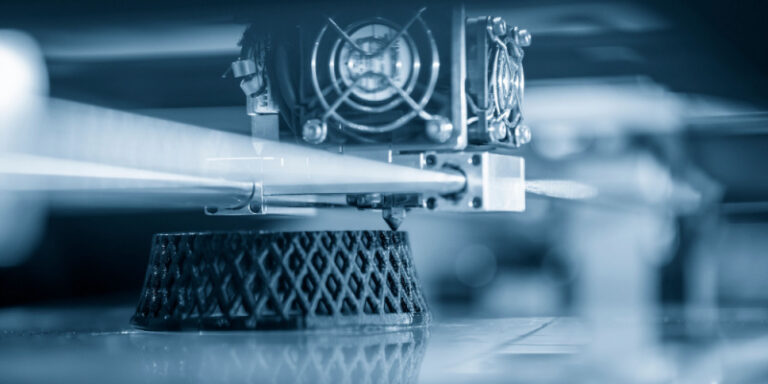Revolutionary Uses of 3D Printers: New Dimensions in Various Industries
Introduction
The advent of 3D printing technology has sparked revolutionary changes across various industries. Its versatile applications are challenging existing standards, promoting sustainability, and bringing a world of new possibilities at our fingertips. This article shines light on how 3D printers are being used in a range of sectors from healthcare to food and sustainability, the future trends we can expect, and how it may affect and disrupt various industries.
What Are 3D Printers and How Do They Work?
3D printers have become an integral part of modern day innovation, yet many still wonder what they are and how they operate. Below are the key points to understand:
- 3D printers are innovative pieces of technology that transform digital designs into tangible three-dimensional objects.
- These devices work through a process called additive manufacturing. This method involves stacking layers of material gradually until the desired object shape is formed.
- The ability to achieve high precision during production enables the creation of complex designs. This feature makes 3D printers unique in comparison to traditional manufacturing techniques.
- The technology is versatile as the range of materials used in the printing process can vary significantly. It can include anything from plastic and metal to chocolate, and even living cells.
- The expansive material use and high precision open up the limitless potential applications of 3D printers across various industries.
How is 3D Printing Revolutionising the Healthcare and Medical Industry?
3D printing technology is disrupting the traditional approach of the healthcare sector and becoming instrumental in personalizing medicine. This leap in technology is enhancing efficiency, facilitating customization, and opening up avenues for breakthrough developments. Let's explore how 3D printing is revolutionising the healthcare and medical industry:
- Customised Prosthetics and Orthotics: 3D printing has made it possible to engineer prosthetics and orthotics tailor-made to meet individual patient's needs. What was once a time-consuming and expensive process can now be accomplished with higher precision and at a fraction of the usual cost.
- Surgical Planning: 3D printing brings an innovative approach to surgical preparation. Surgeons can now employ 3D printed replicas of patients’ organs for rare or complicated procedures, ensuring the surgery is planned with guided precision before it is performed on the patient.
- Bioprinting: One of the most promising applications of 3D printing in the medical sphere is bioprinting - a technique that uses bio-inks to "print" tissue and organs. Whilst this technology is still in its infancy, the prospects of using lab-grown organs for transplantation to save lives are nearly limitless.
- Personalised Medications: 3D printed drugs offer a novel solution to dosage customization problems. In 2019, FDA approved a 3D-printed pill called Spritam that could be tailored according to the patient's condition making it an easier pill to swallow, both literally and figuratively.
Clearly, 3D printing is becoming an indispensable tool in medical and healthcare innovations and continues to prove its immeasurable potential in transforming patients’ lives. These advancements are just the beginning, and the future holds even more exciting prospects.
How is 3D Printing Challenging Convention in the Food Industry?
The influence of 3D printing on the food industry is undeniable, making what once was impossible now achievable. The technology's multifaceted capabilities allow for superior exactitude and ingenuity in culinary creations while confronting crucial international concerns like hunger and environmental preservation.
- Artistic Culinary Craftsmanship: 3D printing has the exceptional capacity to create complex designs for decoration, impossible through manual techniques. Bakers extensively utilize this feature to design intricate, edible cake toppings, attracting a more extensive audience.
- Molding Food Texture: Tailoring food textures for individuals with swallowing difficulties was a challenging task in the past, but 3D printing has streamlined this process. Both the appearance and the feel of the food can now be easily modified to meet particular dietary needs.
- Addressing Global Hunger: One of the pioneering solutions to global malnutrition is the innovation of 3D-printed food. This method allows for mass production, ensuring nutritional balance and extending food shelf-life, thus minimizing wastage.
- Environmentally Conscious Meat Substitutes: Several organizations are adopting 3D printing to create plant-based substitutes for meat. Not only do these alternatives provide the same taste and texture as real meat, but they also contribute to significantly reducing the environmental impact of traditional animal farming.

In these ways, 3D printing technology is demolishing the conventional norms of the food industry, enhancing creativity, promoting inclusivity regarding dietary needs, and stepping up to mitigate global food and environmental crises. It presents an exciting hint on where our culinary future might lead us.
How is 3D Printing Contributing to Sustainability and the Environment?
3D printing technology, while transforming numerous industries, is simultaneously evolving as an effective tool within greener initiatives. It's not just enhancing industrial efficiency, but also driving sustainable change and boasting potential environmental benefits. Let’s delve into some of these unique contributions:
- Promotion of Circular Economy: 3D printing encourages a production model of 'print on demand.' With less necessity for surplus production or inventory, waste levels decrease, and energy consumption is considerably reduced.
- Reuse of Materials: 3D printers can often use recycled or eco-friendly materials. The capacity to print using these materials actively promotes recycling, consequently reducing landfill waste and contributing to a more sustainable ecosystem.
- Green Construction Practices: It’s also creating a paradigm shift in the architecture and construction industry. 3D printed homes require fewer raw materials and offer quicker construction times, reducing the overall environmental impact. According to a report by the Agency for Science, Technology and Research, building a three-room house with a 3D printer used 60% less material than traditional methods.
- Revolutionizing Energy Production: The renewable energy sector has particularly benefited from 3D printing. Specific components for wind turbines or solar panels can be manufactured, lowering costs and amplifying efficiency.
With these major sustainability applications, the role of 3D printing in environmental preservation has become much more than a futuristic concept. This technology has demonstrated that it can deliver practical solutions to critical environmental issues, marking its integral role in the relentless journey towards a more sustainable future.
What Future Trends Can We Anticipate for 3D Printing?
The landscape of 3D printing, while already revolutionary, continues to evolve and grow, promising to bring forth further dynamic changes in numerous sectors. Here, we explore the significant trends that we can expect in the near future:

- Construction Industry Transformation: Large-scale 3D printers are expected to disrupt the way structures and buildings are created. We could witness an upsurge in 3D printed structural components or even entire buildings, which will drastically cut down on construction time, cost, and resource usage.
- Space Exploration: NASA is exploring the utilization of 3D printing to create habitats on other celestial bodies. This technological advancement could lead to breakthroughs, making the possibility of long-term space travel and habitation conceivable.
- Customized Fashion: The fashion industry is set to embrace an era of mass customization with the introduction of 3D printed garments. This trend could witness a rise in personalized clothing designed to fit individuals’ precise measurements, thus reflecting an evolution in bespoke fashion.
- 3D Printed Organs: The concept of 3D printed human organs, despite being in a developmental phase, holds immense potential. Referred to as 'bioprinting', this technique could dramatically address the severe organ shortage issue for transplants, transforming millions of lives worldwide.
- Statistics: The global 3D printing market size was valued at USD 11.58 billion in 2019 and is projected to reach USD 49.1 billion by 2025. This staggering growth, backed by the acceleration of future trends, suggests a limitless horizon for 3D printing technology.
In conclusion, the pathway of 3D printing leads to an arena of endless possibilities. As its applications continue to evolve and roll out, society will witness unprecedented transformations in operational efficiency, customization capabilities, and overall technological advancement.
Conclusion
No longer confined to the realms of science fiction, 3D printing is having a real-world impact, revolutionizing countless industries and promising to change our lives in fundamental ways. As it continues to evolve, we can expect to see even more exciting applications unfold, underscoring the depth of human innovation and the limitless potential of technology.
Related FAQs about what can 3d printers be used for
What are some unexpected applications of 3D printers?
Although 3D printing is often associated with producing physical objects, it has some unexpected applications. For instance, scientists are exploring bioprinting, which could eventually print human organs for transplants. In the food industry, 3D printers can create artistic pastries or even print meals tailored to specific dietary needs.
How can 3D printing contribute to reducing environmental impact?
3D printing contributes to reducing environmental impact in various ways. It promotes a 'print on demand' culture, reducing inventory waste and energy consumption. It can use recycled materials, reducing landfill waste. Moreover, 3D printed homes require fewer raw materials, reducing the environmental footprint of the construction industry.
What industries are most likely to be disrupted by 3D printing in the future?
Future trends indicate the construction industry might see major disruption from 3D printing, with the potential to create complete buildings. The medical industry could also see significant change with bioprinting of human organs. Additionally, the fashion industry could see bespoke clothing experiences with 3D printed garments.


